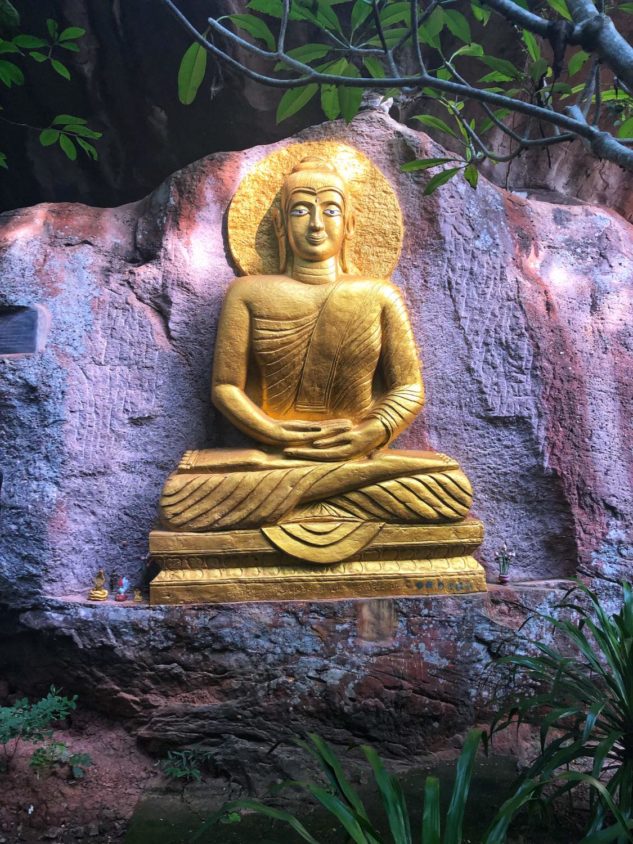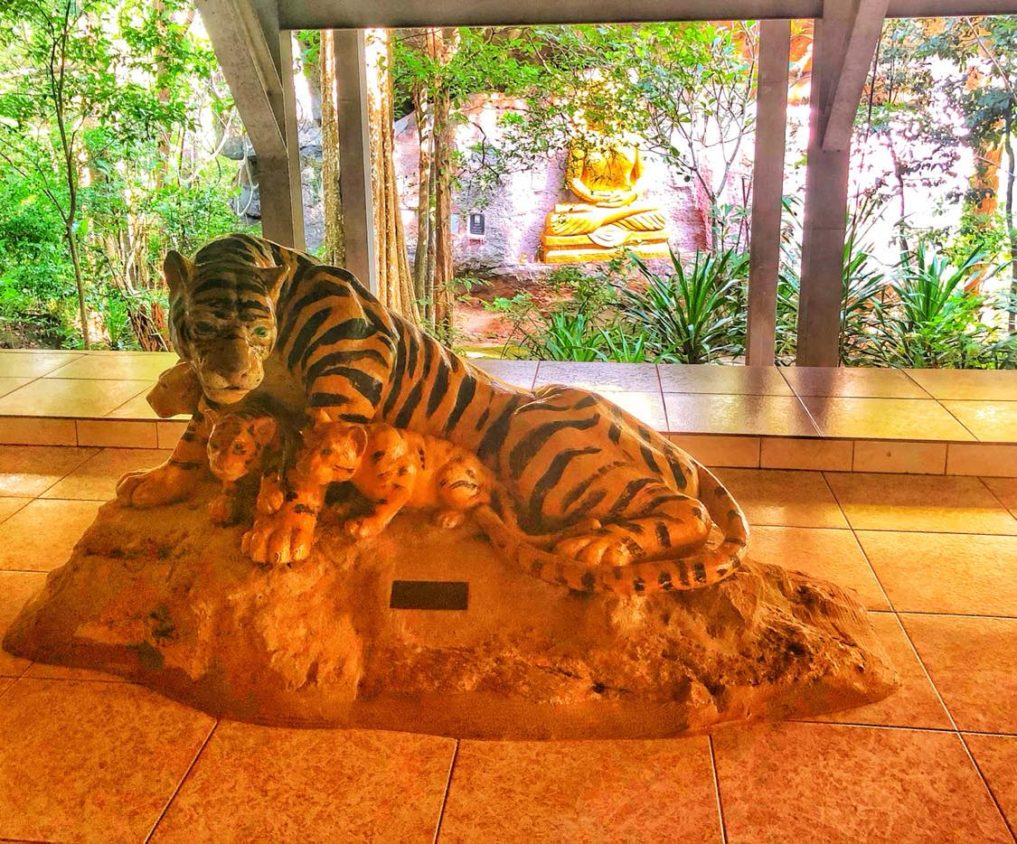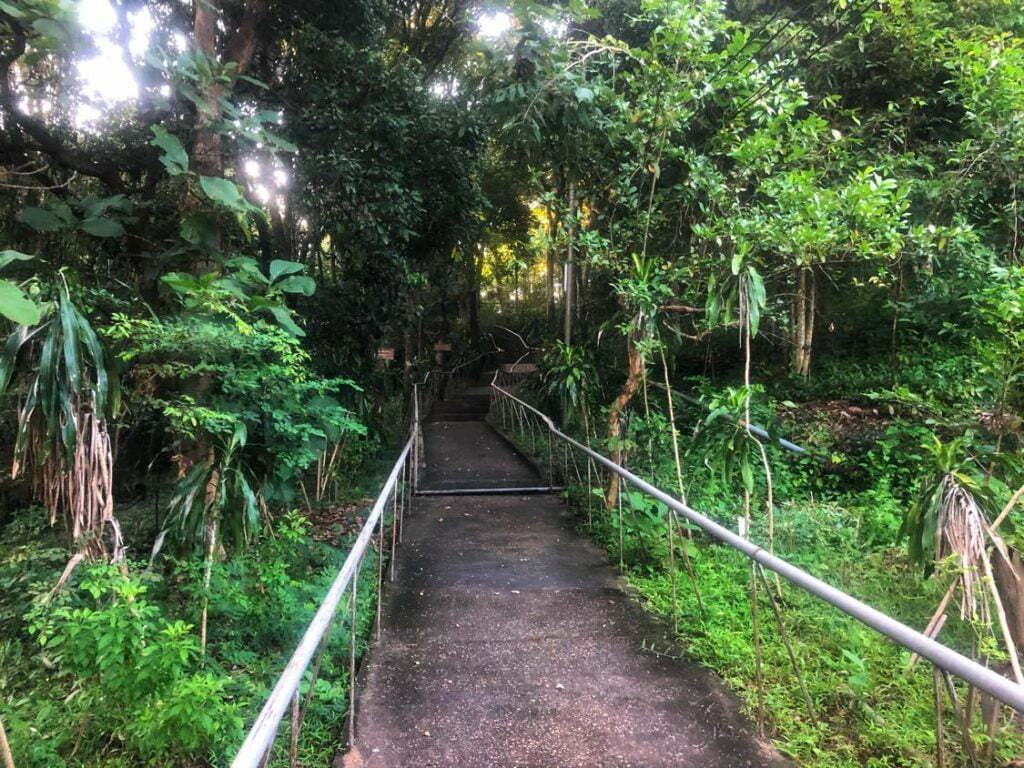Description
Wat Tham Kham (วัดถ้ำขาม) is a highly revered temple in the Northeastern region of Thailand (known as Isaan). It is located on Phu Kham Mountain in the Phanna Nikhom district of Sakon Nakhon province. Phu Kham Mountain is part of the Phu Phan mountain range that runs through the region.
Wat Tham Kham was the home of the venerated monk Phra Ajarn Fan Acharo, who was born in 1899 and became well known as a “wandering monk”. He resided here until 1964. In his later years, he also spent time at Wat Pa Udom Somphon and Wat Pa Phuthon Phithak.
The origin of the temple began in 1953, when Ajarn Fan (pronounced "ajahn fun") was led by local villagers into the forest to stay in a large cave they called "Tham Kham". The cave was popular among villagers because it housed an old Buddha statue, which they poured water over to make merit during the Songkran festival.
Legend has it that when Ajarn Fan first went to stay in the cave, a tiger was already living inside. However, upon seeing Ajarn Fan, the tiger abandoned the cave. The famous monk then stayed in the cave to live and meditate, along with several young Buddhist novices. He eventually had the villagers build a pavilion there. Many years later, that small pavilion was gradually developed into the beautiful temple grounds you see today.
A majestic pagoda stands at the center of the Wat Tham Kham. It was built in Isaan and Ayutthaya style, and has gorgeous teak doors engraved with the Hindu god Shiva holding a trident and a sword. The pagoda is a memorial to Ajarn Thate Desaransi (Luang Phu Thate), who lived here in his later years, until his death at the age of 92.
Ajarn Thate (อาจารย์ เทสก์) is a widely respected monk who was among the early teachers of the Thai Forest Tradition. He was a disciple of Ajarn Mun (1870-1949), a co-founder of the forest tradition. After Luang Pu Mun's death, he became the head of the Thai Forest Tradition until his death in 1994.
Wat Tham Kham's memorial pagoda houses a bronze statue of Ajarn Thate, dabbled with gold flake, and a gold Buddha image with hands raised in the Abhaya mudra (also known as the "calming the ocean" pose). The pagoda also holds the ashes of Luang Phu Thate and artifacts from his life, including photos of the Thai Royal Family paying their respects to the revered monk, including King Bhumibol the Great.
Outside the pagoda (at the bottom of each of the four staircases) are beautiful bronze tiger statues in honor of Ajarn Fun and the legend of the tiger cave. That old cave is located below the cliff on which the pagoda sits. A Reclining Buddha image is carved into the side of the cave, where have been placed gold Buddha statues and sculptures of both Ajarn Fan and Ajarn Thate. To get to this cave area, you want to take the descending staircase that is to the left of the lookout ledge which provides a panoramic view of Sakon Nakhon.
Visitors must climb a rather steep flight of steps to reach the Wat Tham Kham temple grounds, where you might also see wild monkeys and peacocks walking on the cliff face. Please note that when you get about 3/4 of the way up the steps, you'll see an exit that leads to a pathway through the woods. Do not exit here and take this path, as it is exclusively for monks. There is some woodsy pathways to walk if you visit the lower cave area.
Wat Tham Kham is about 40 minutes from downtown Sakon Nakhon. Much of the trip follows winding small roads through villages and countryside. Traveling there provides a great opportunity for a scenic motorcycle trip. See our complete photo gallery at: Wat Tham Kham Photos.
After visiting the temple, we would suggest also visiting the ancient Khmer temple ruins of Pra That Phu Phek, which is located about 20 minutes away. Or, if you are on motorbike, and feeling adventurous, you could try to find your way to the secluded Wat Tham Pha Chan, which is 8 kilometers away.









